
SEOM 2024
14 - 18 Octubre 2024, Madrid
|
|
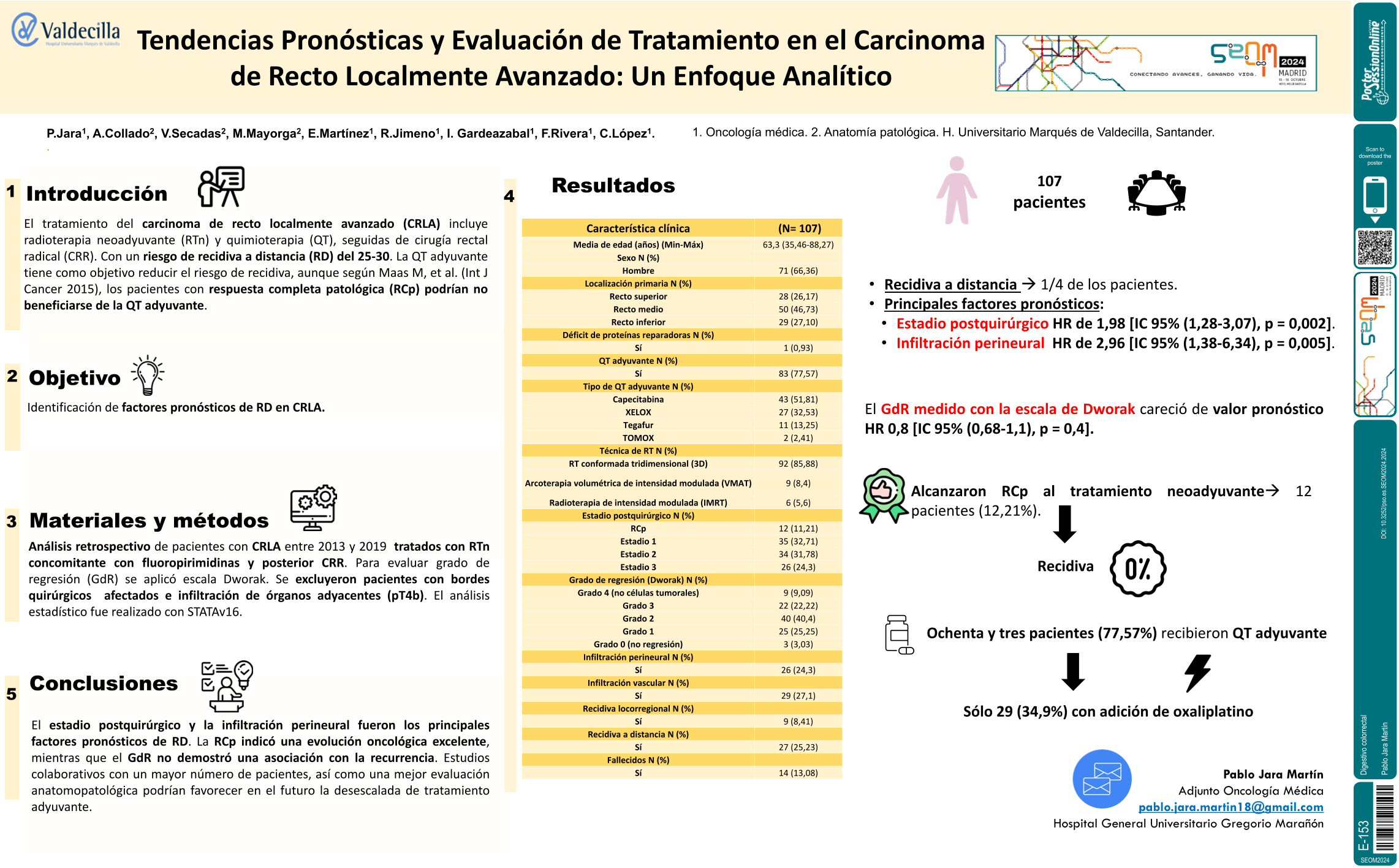
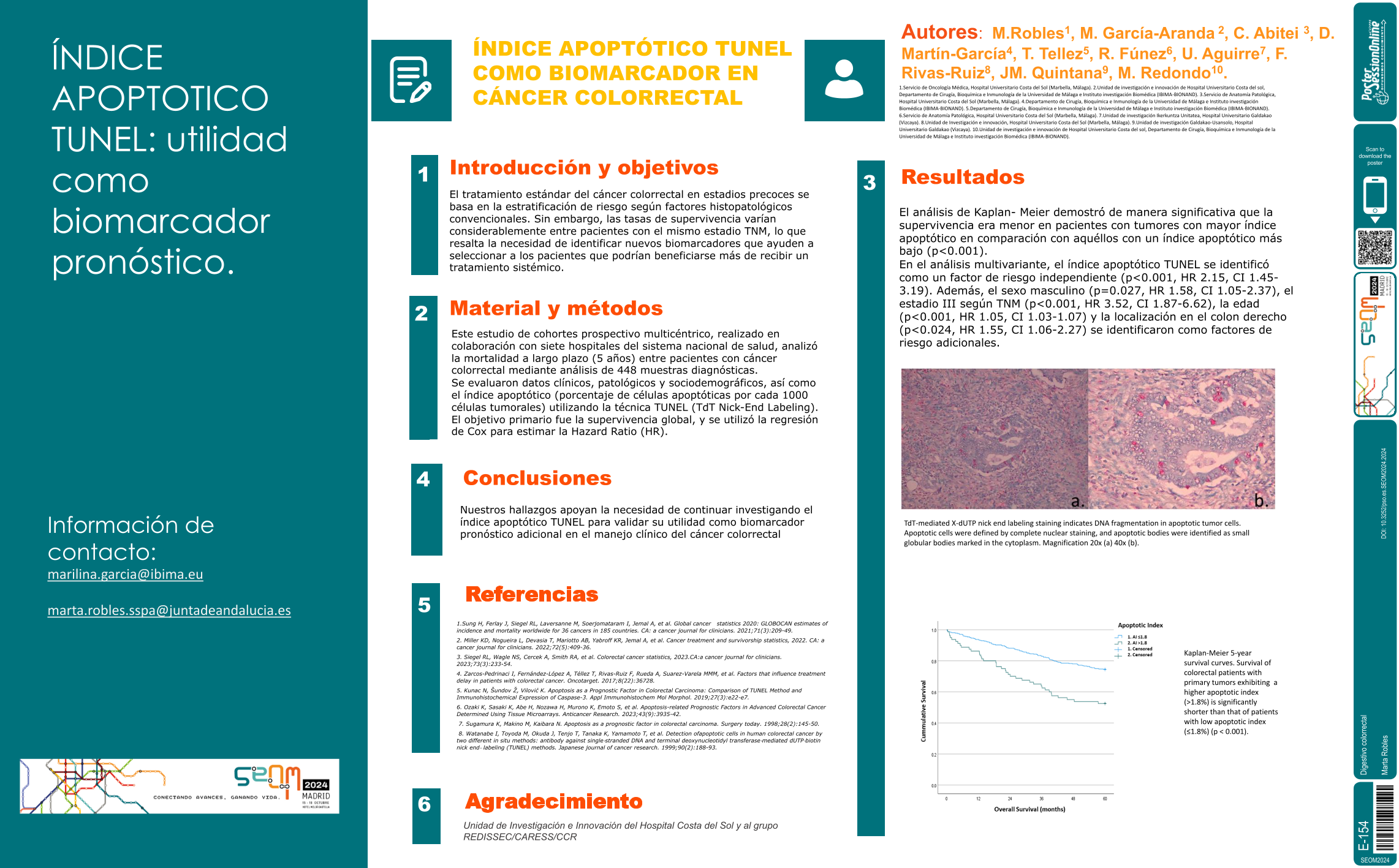
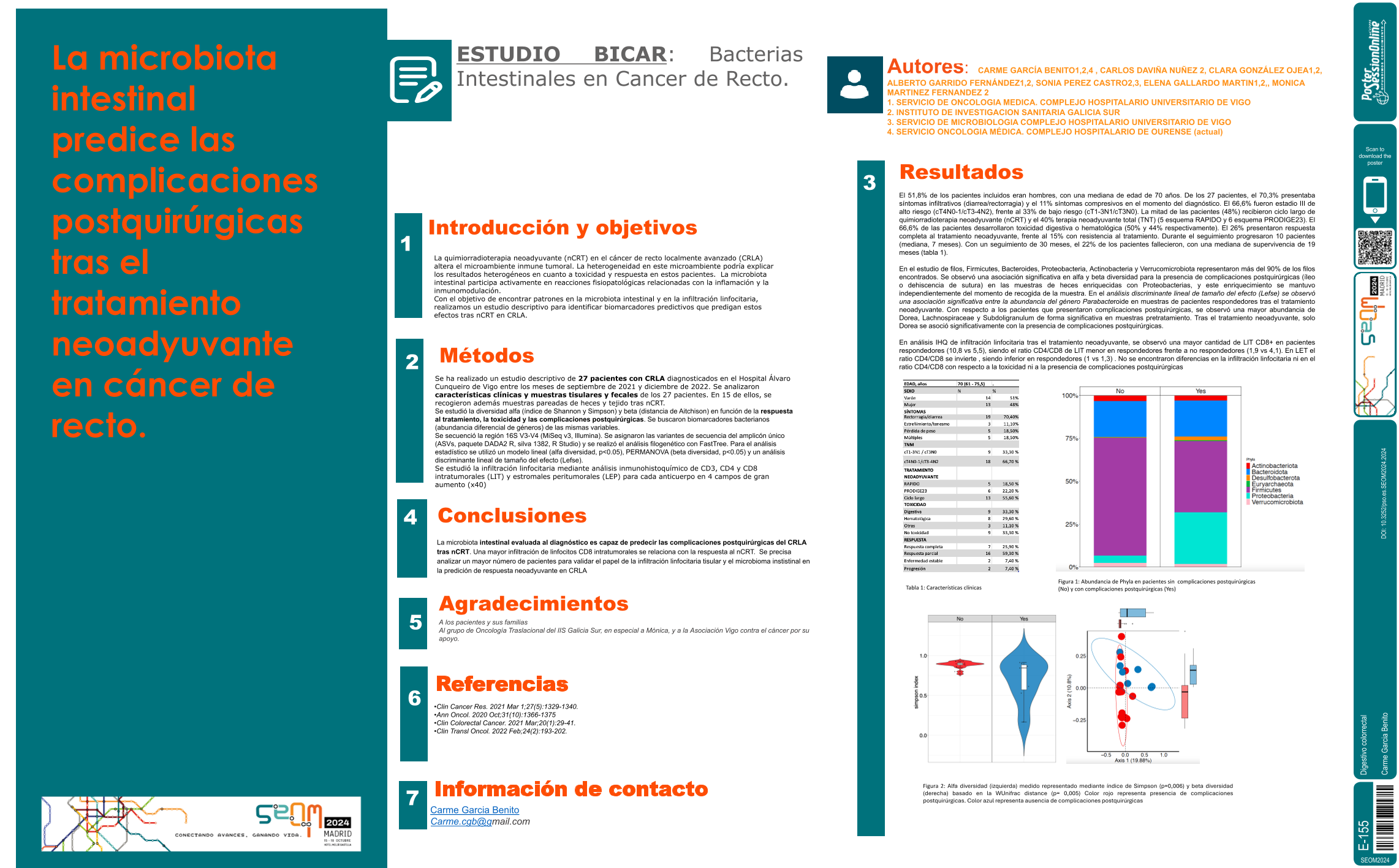
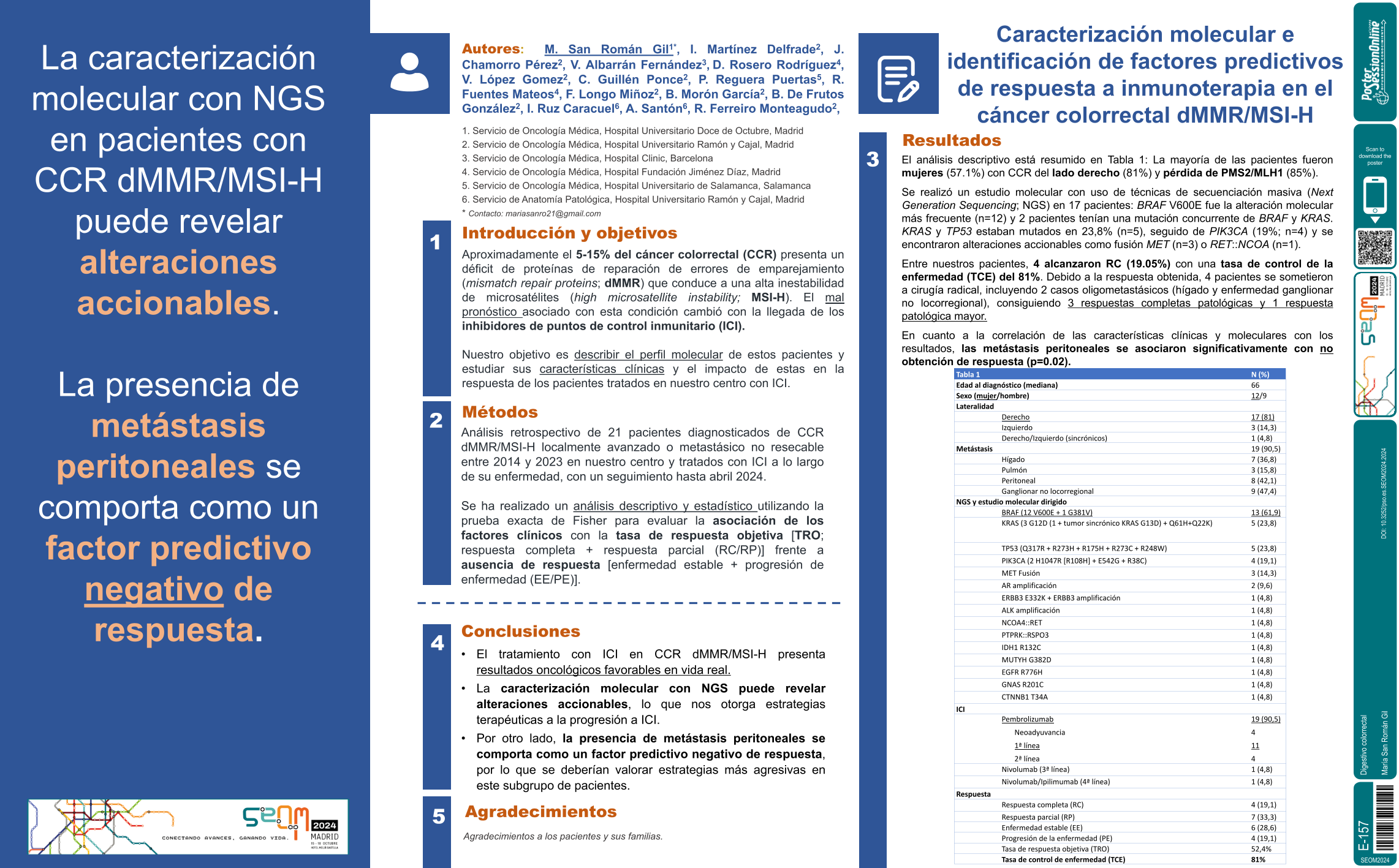
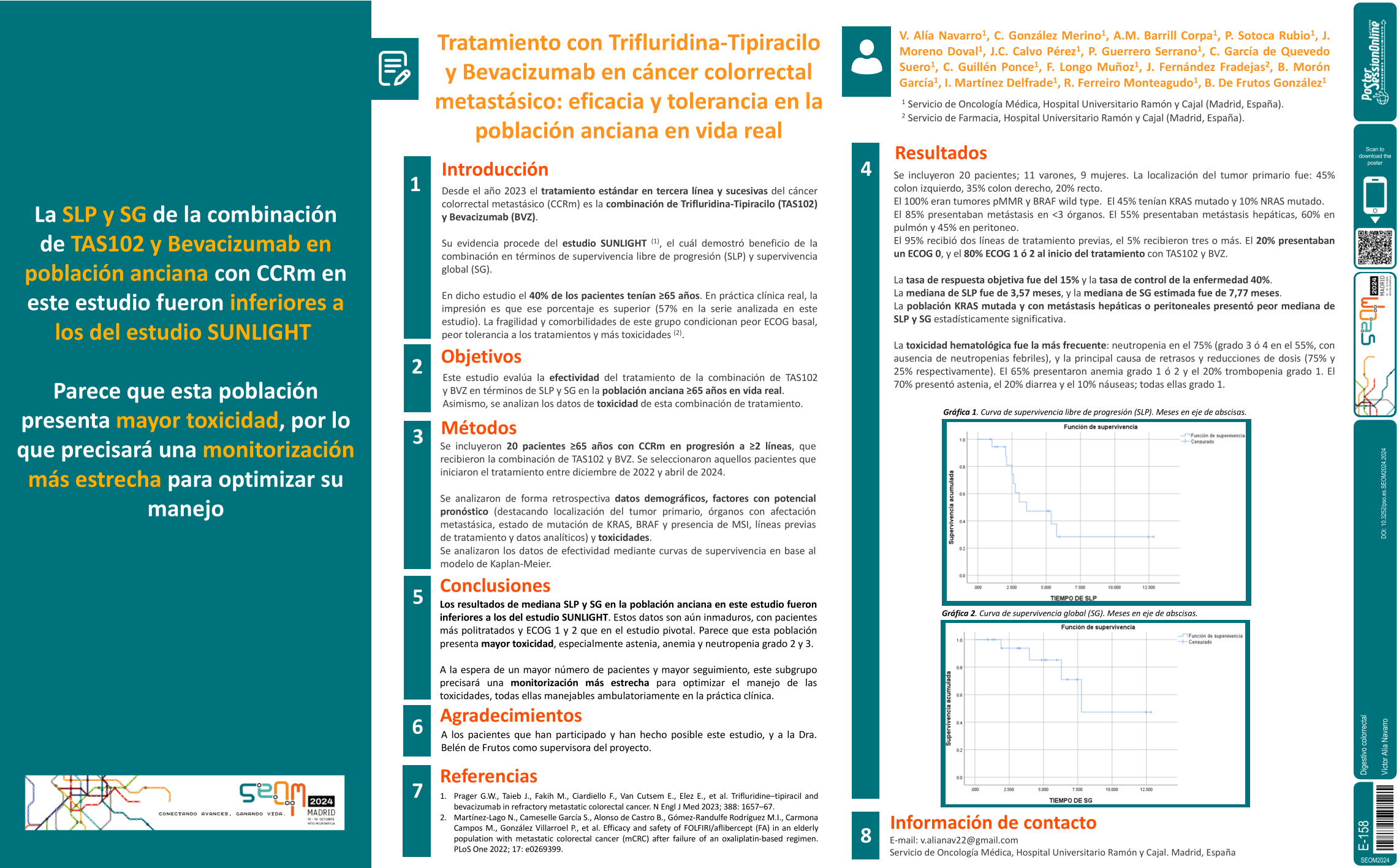
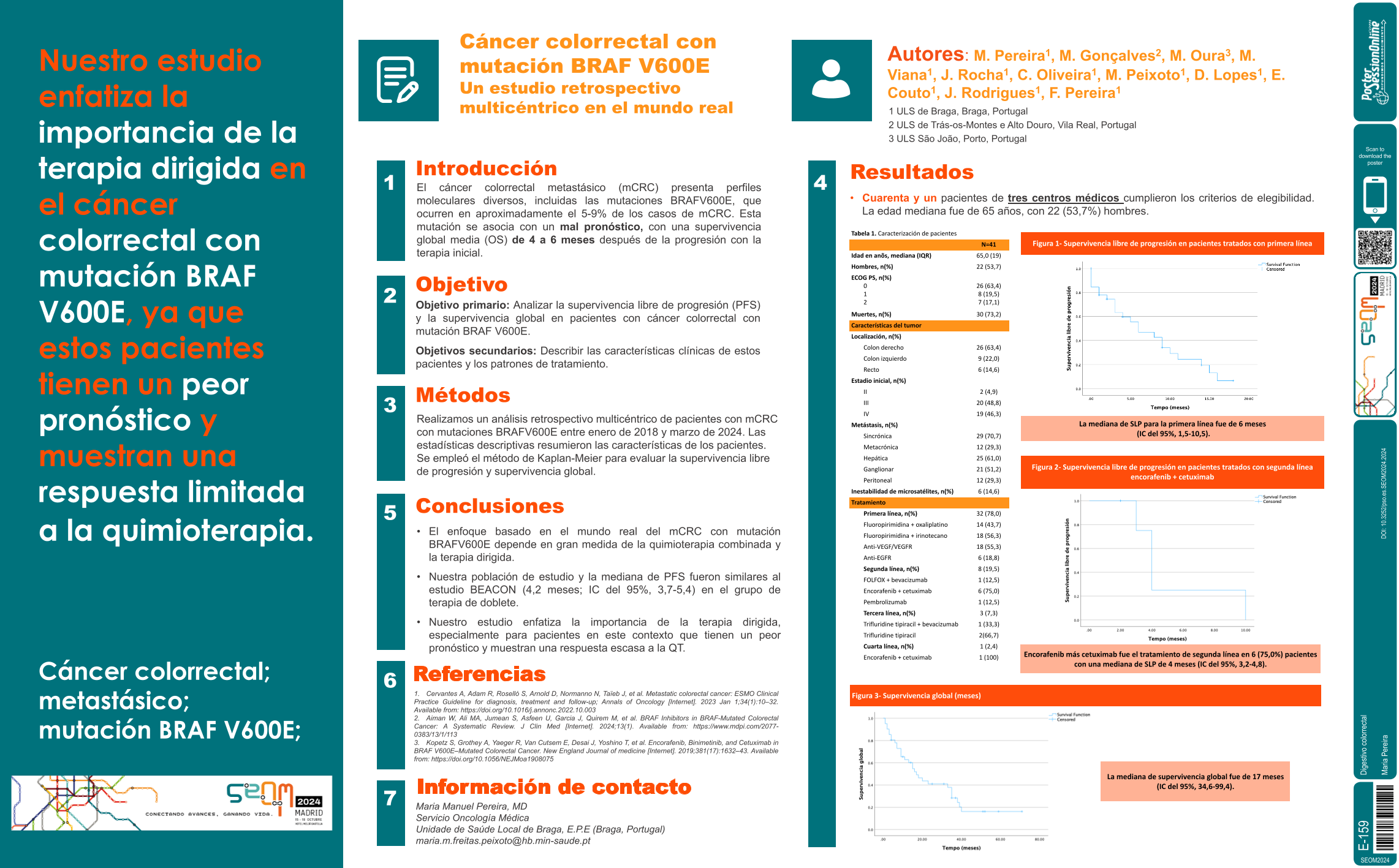
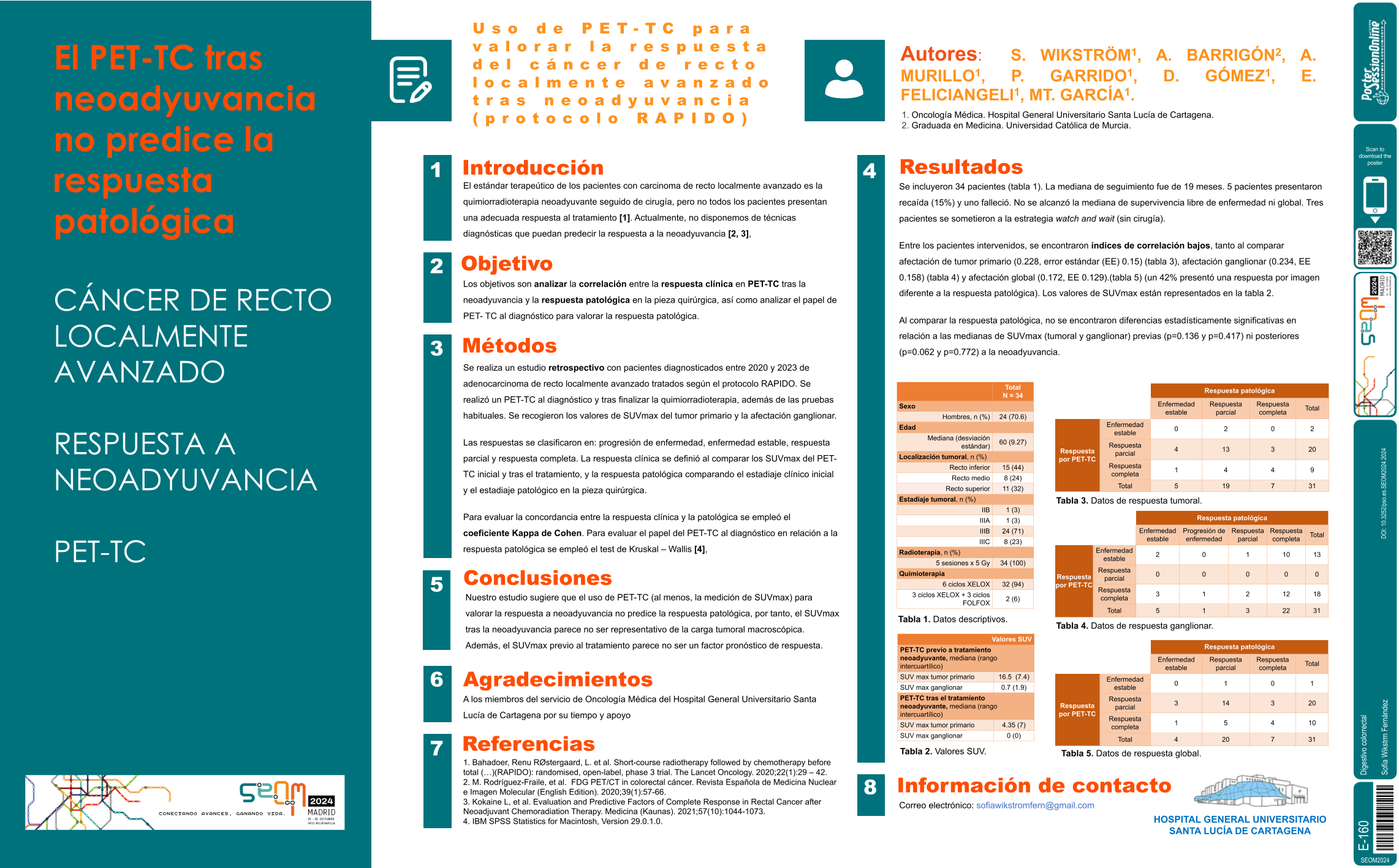
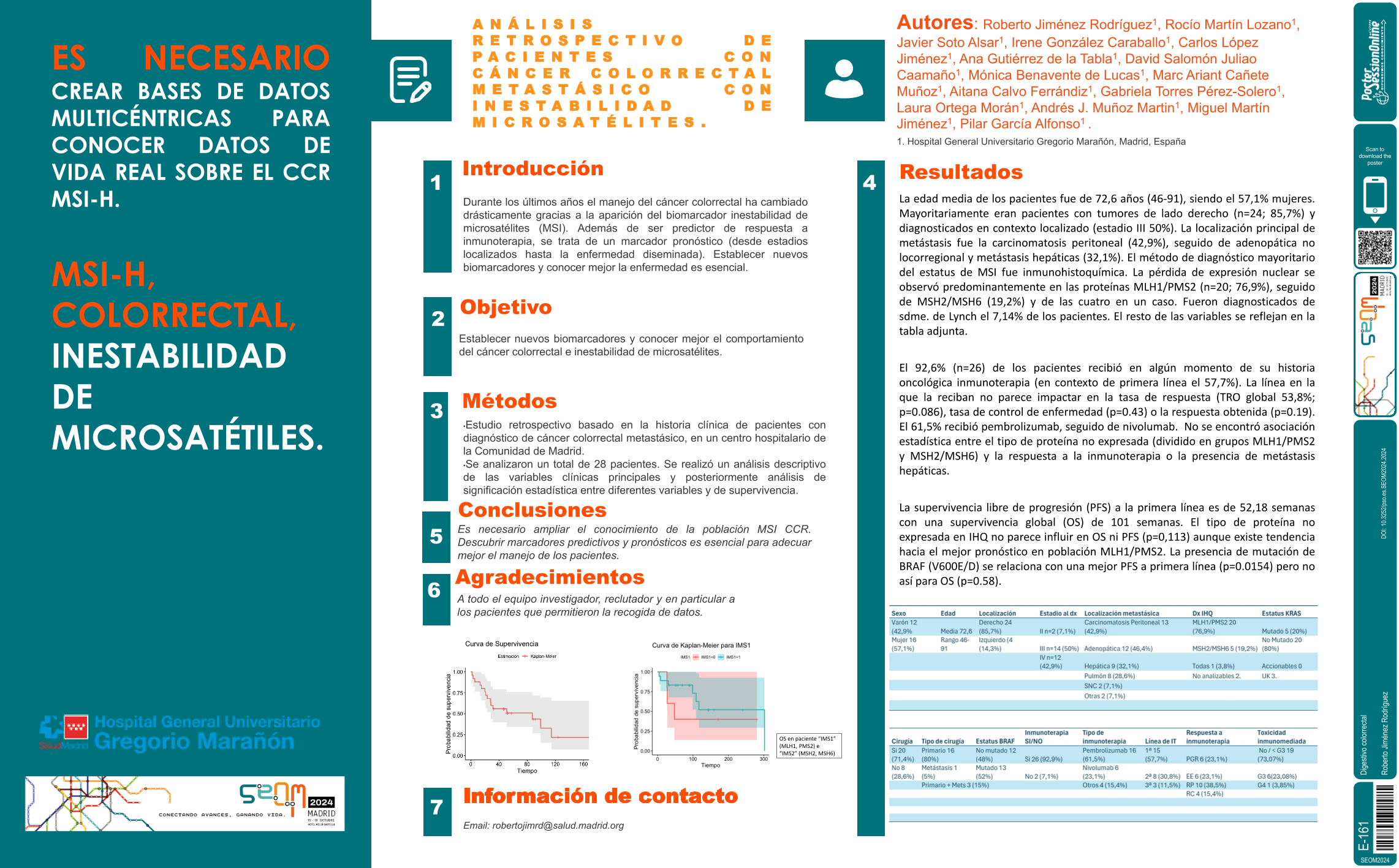
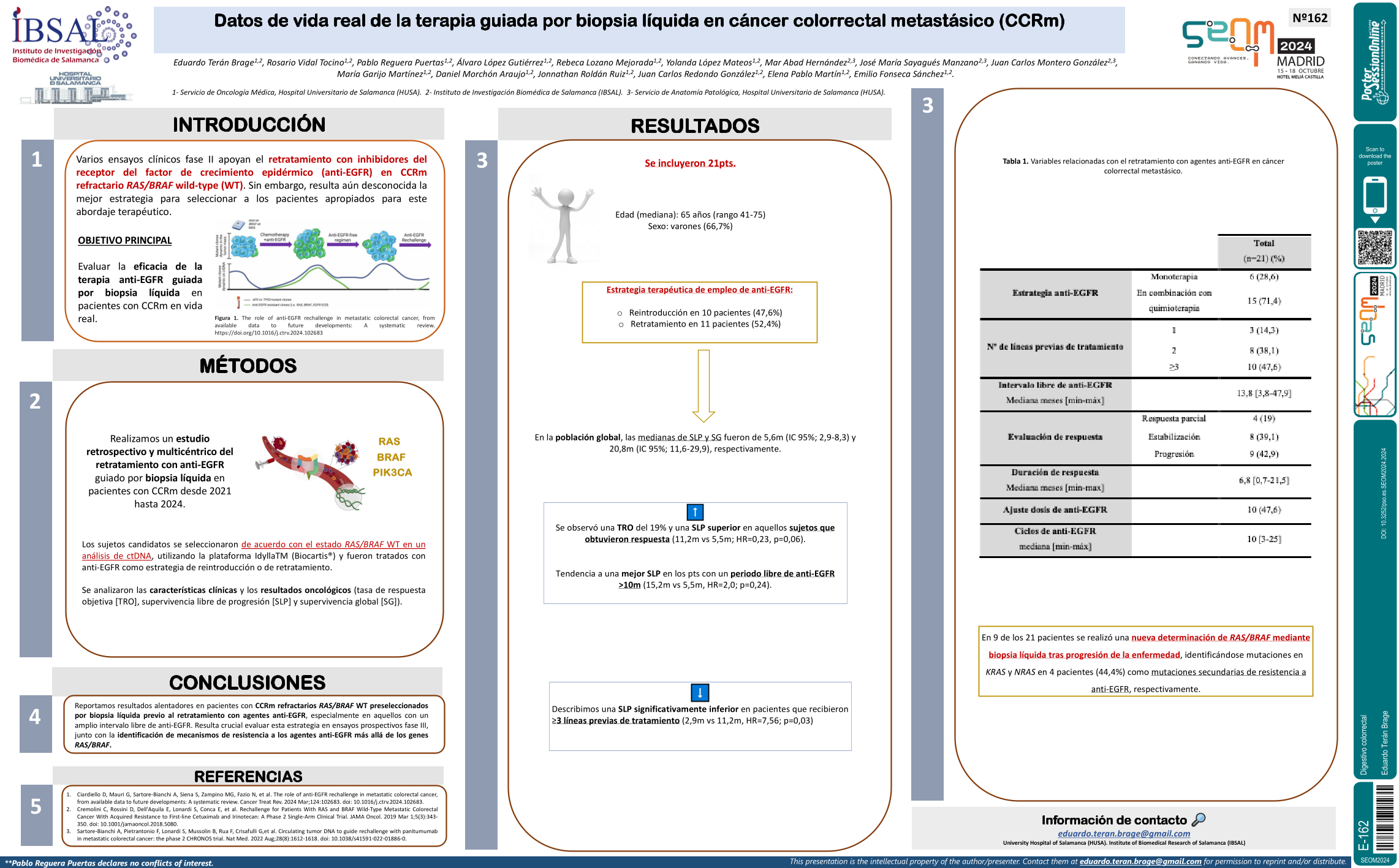
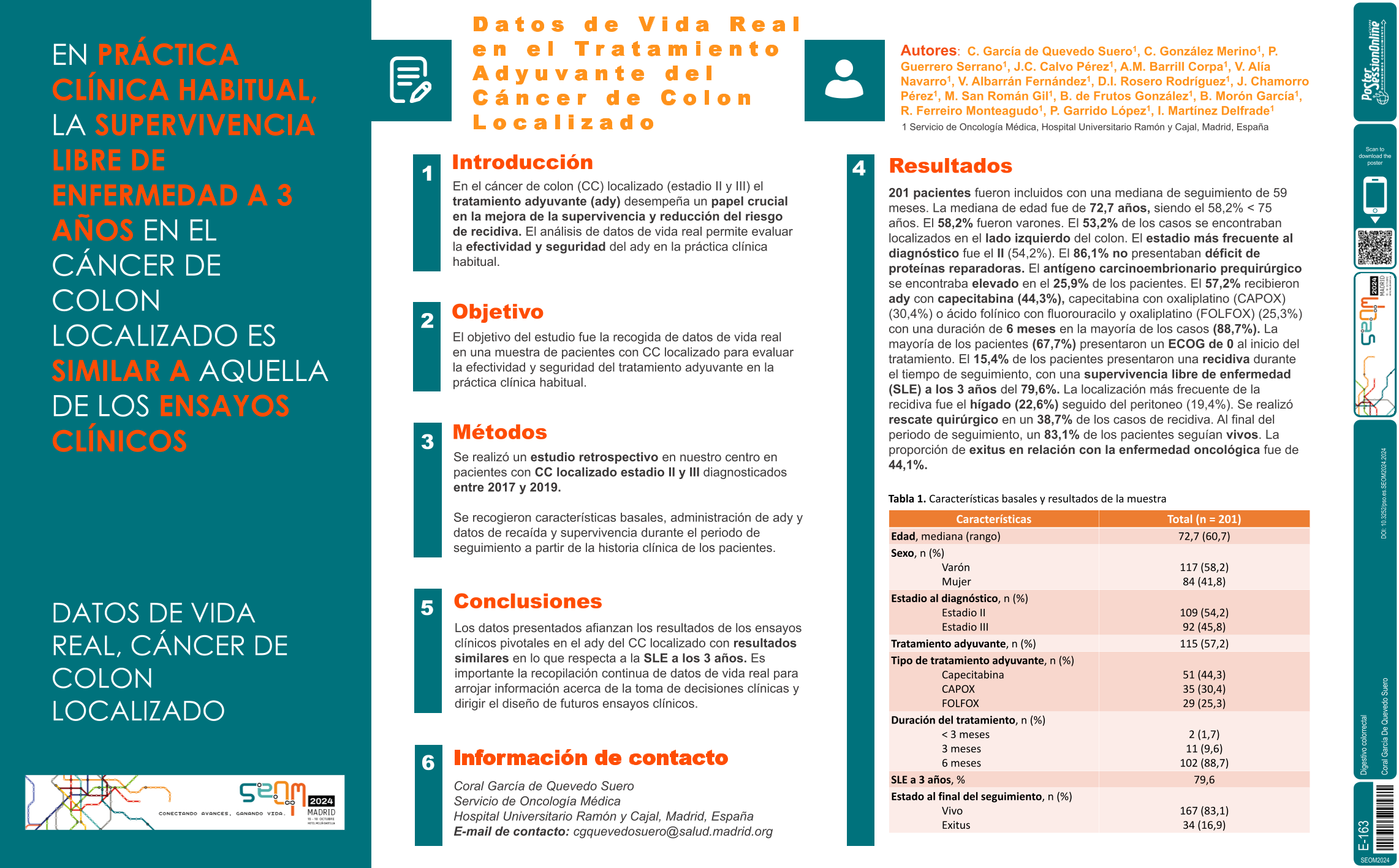
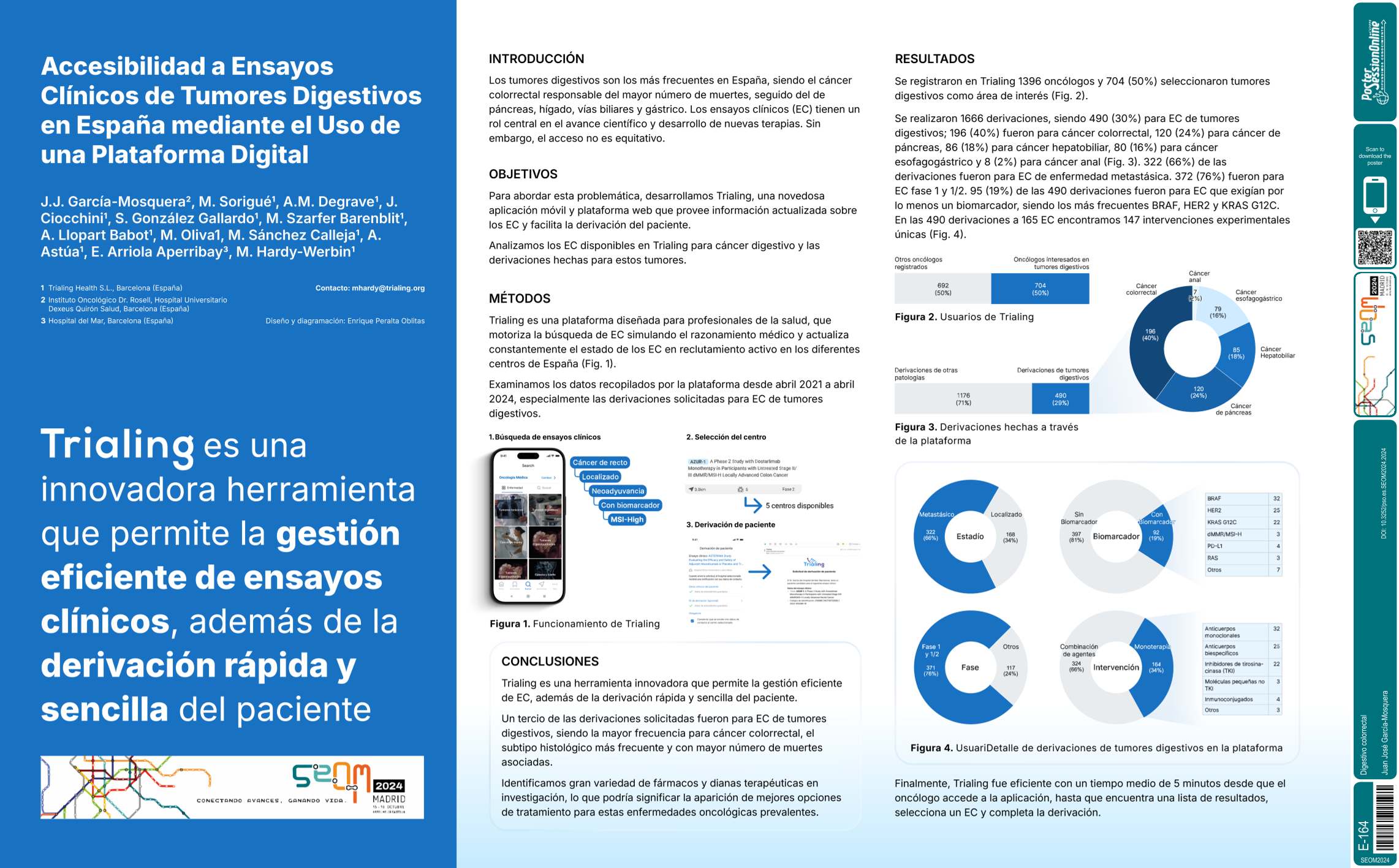
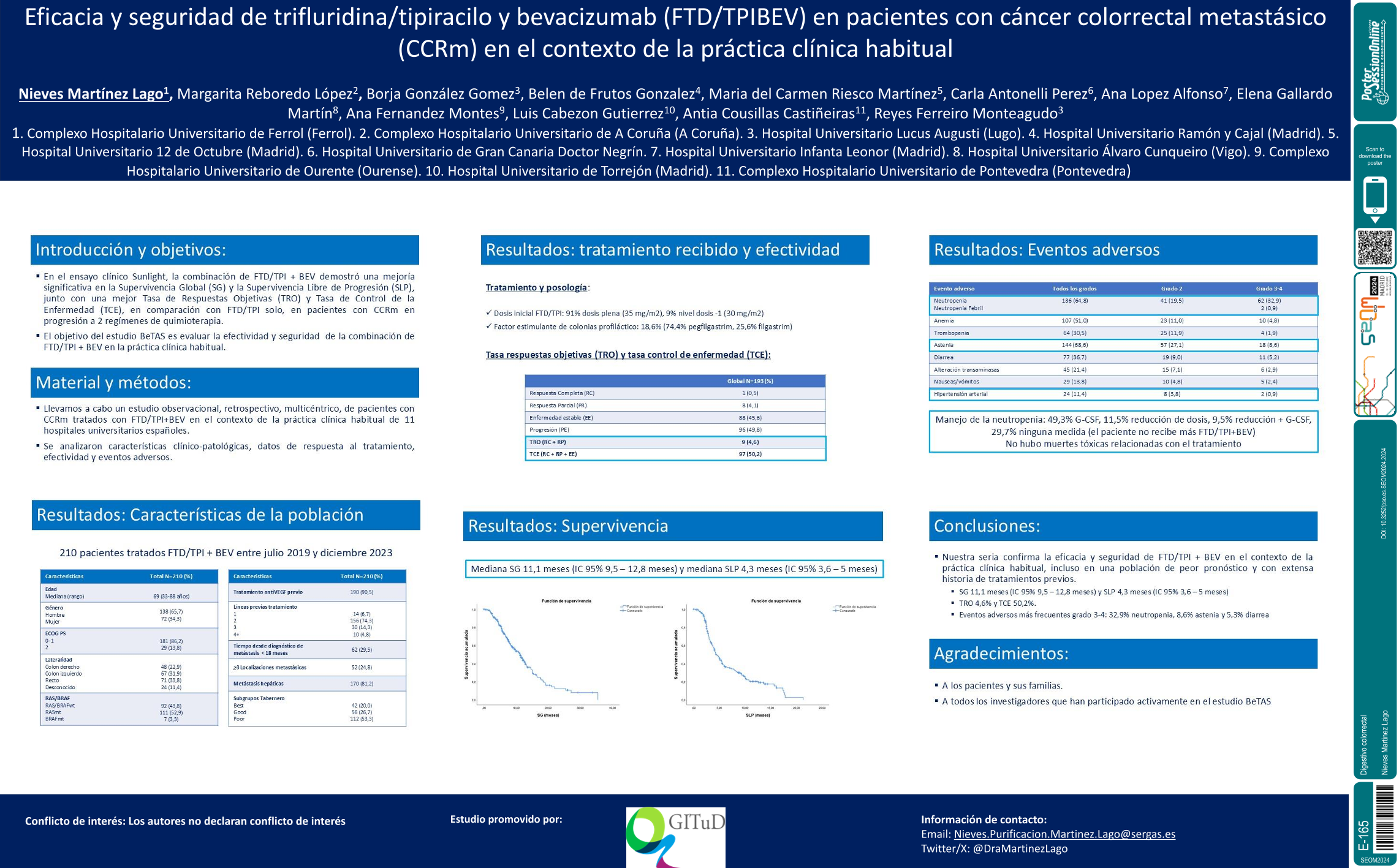

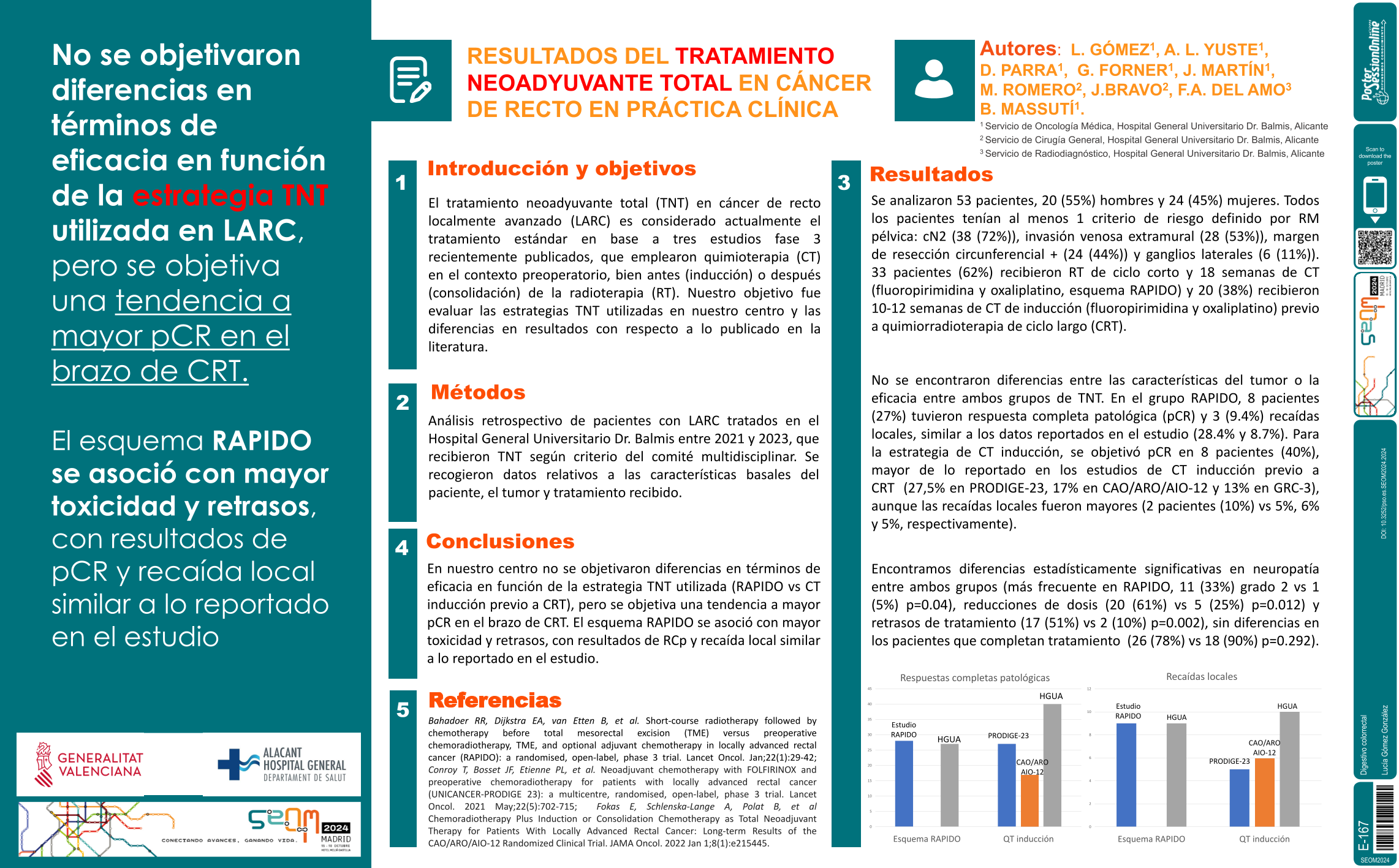
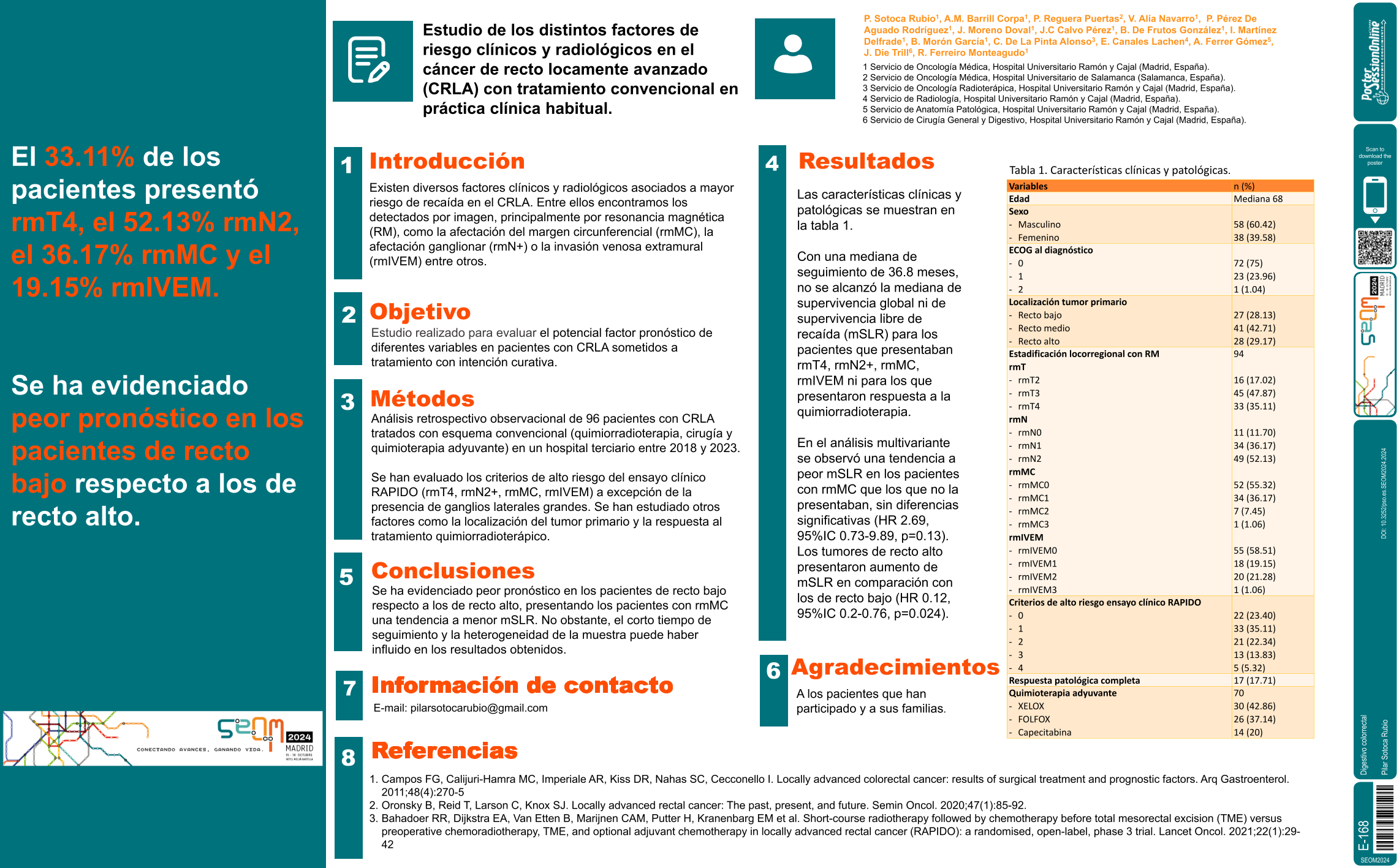
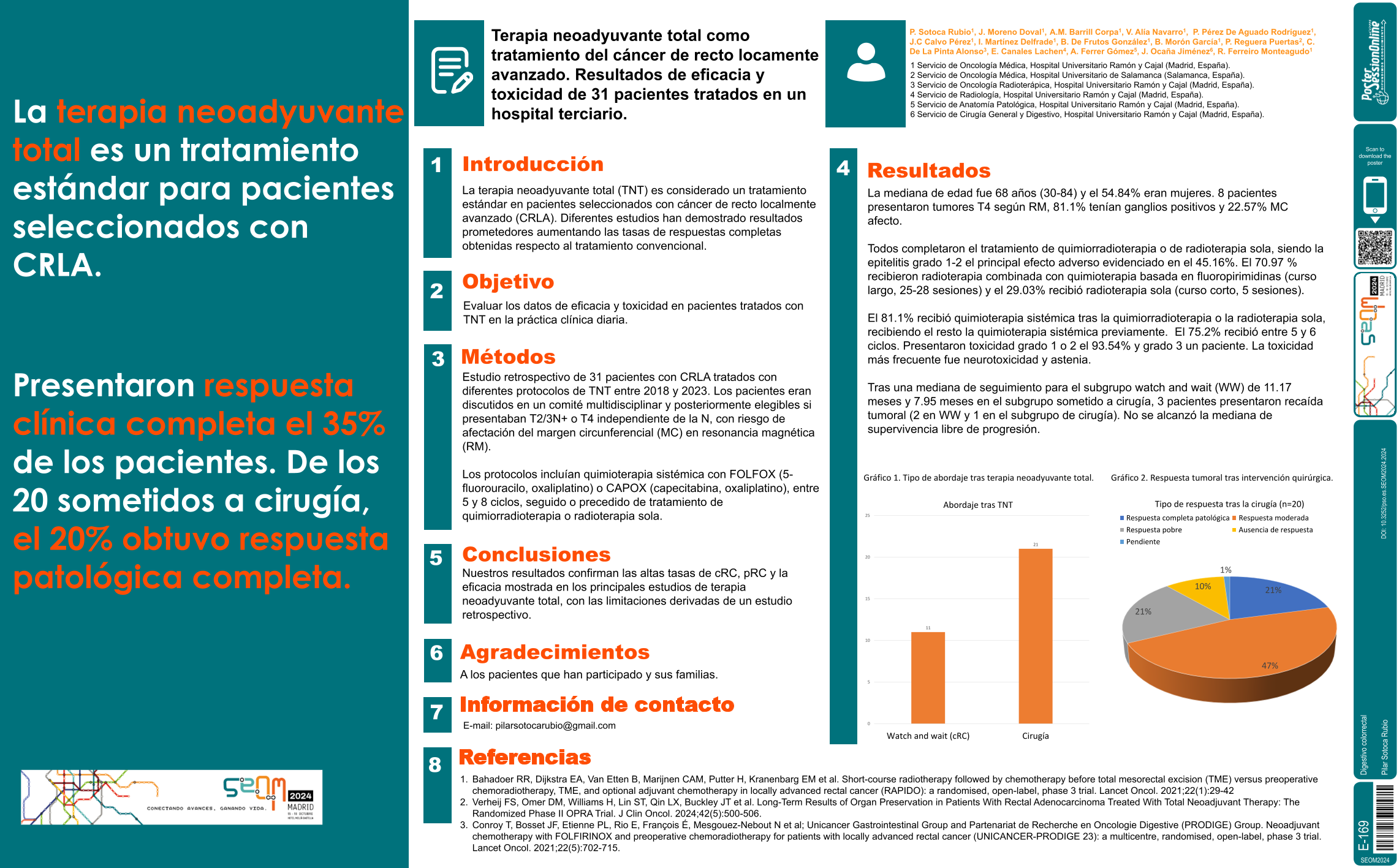
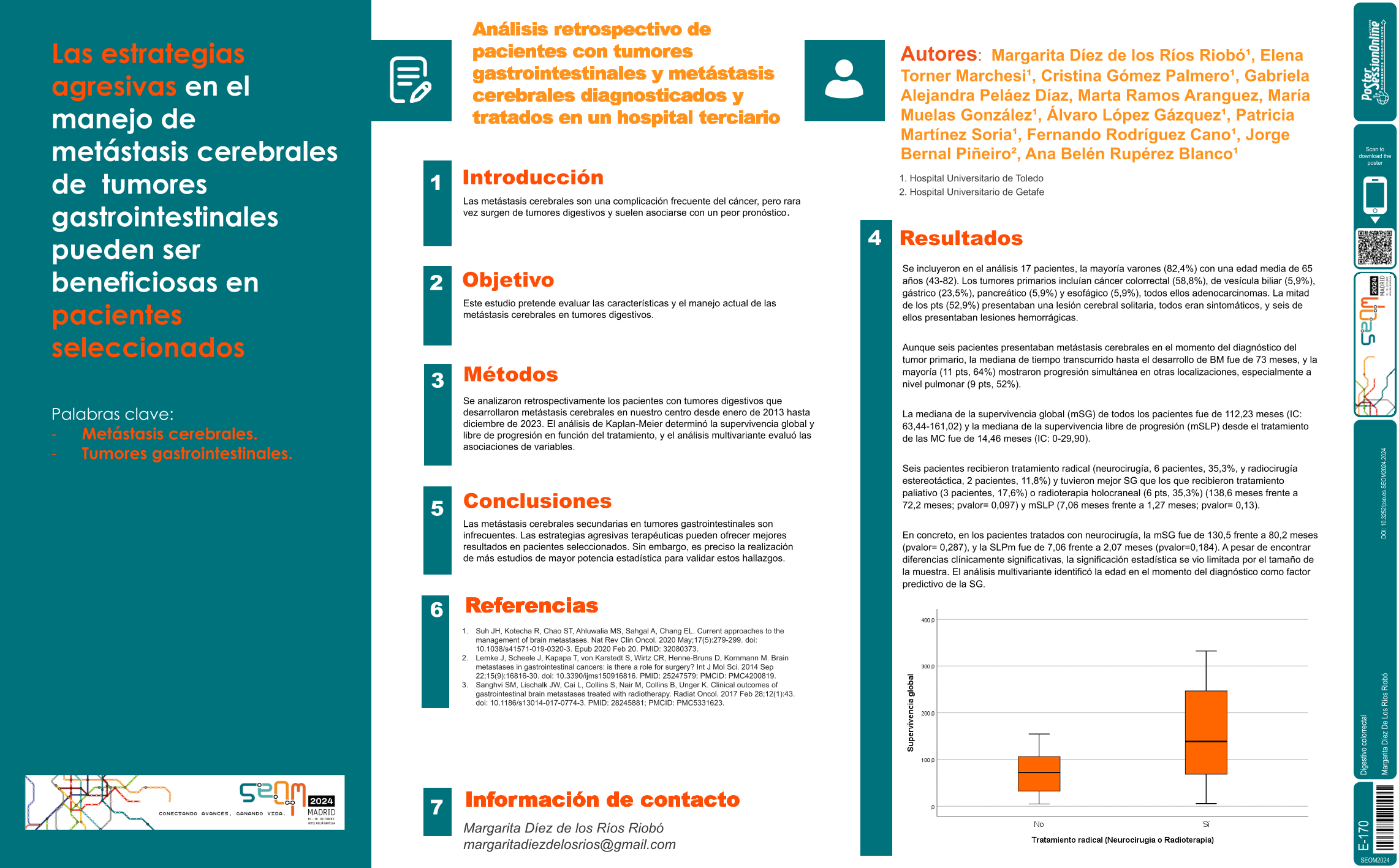
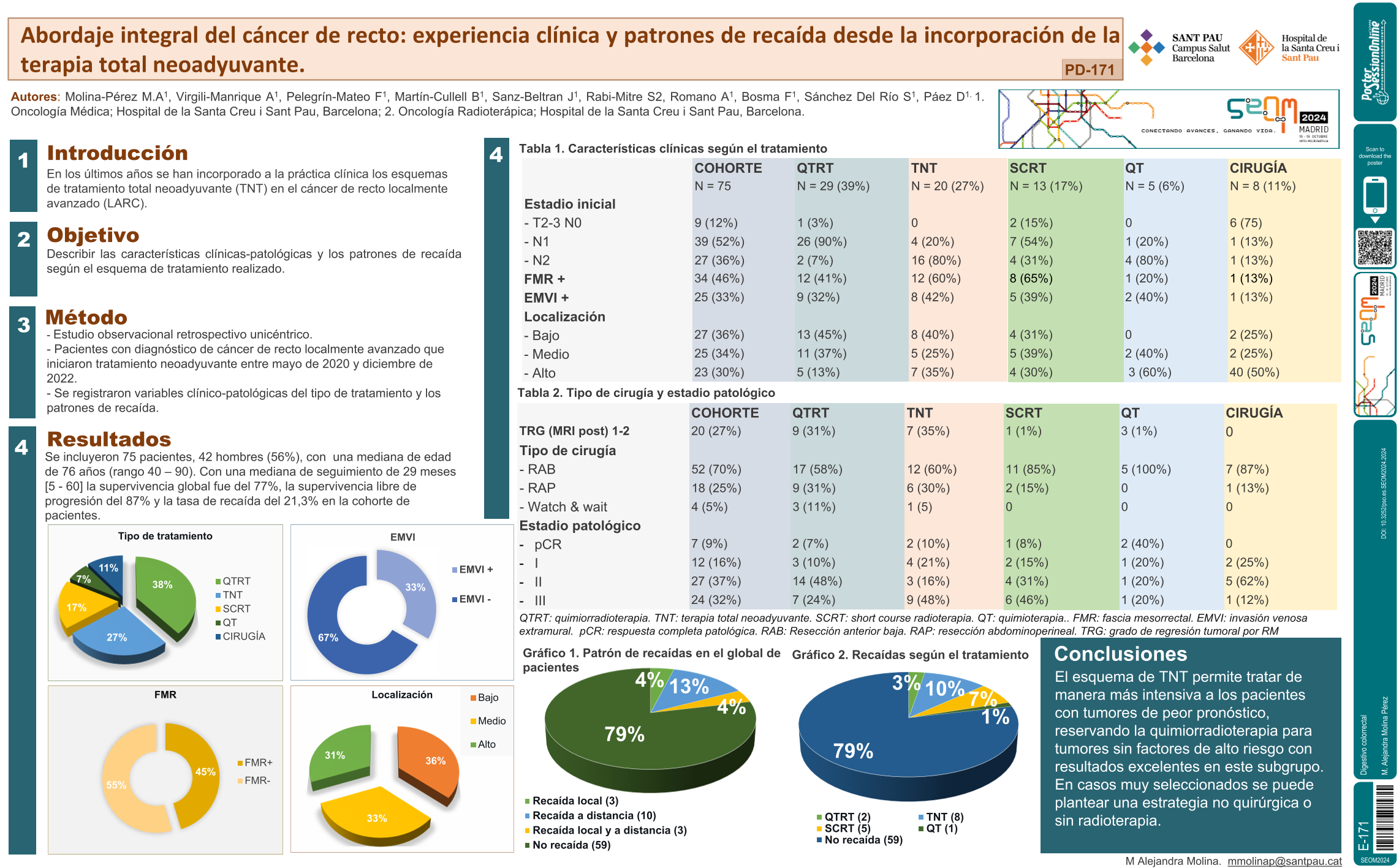
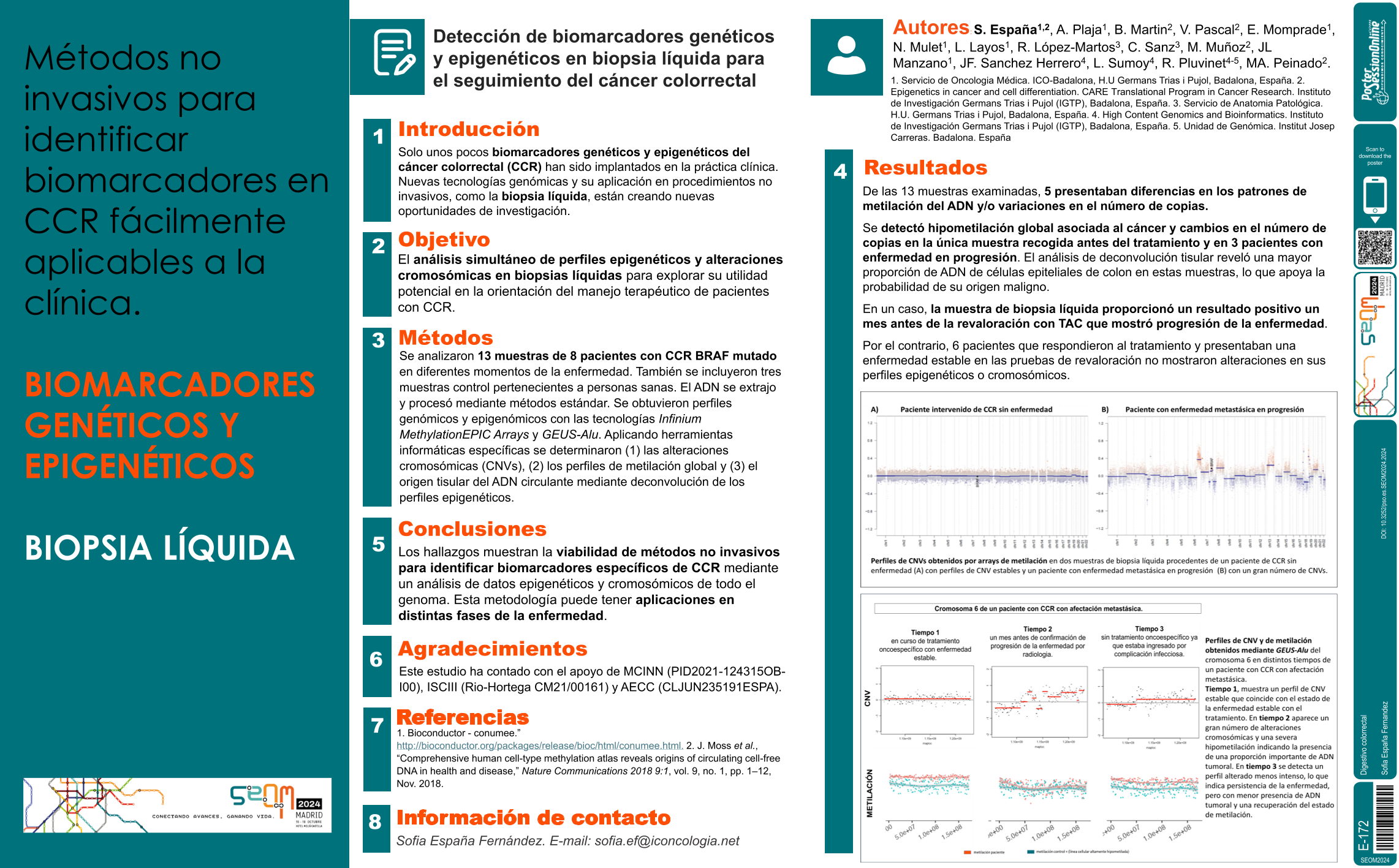
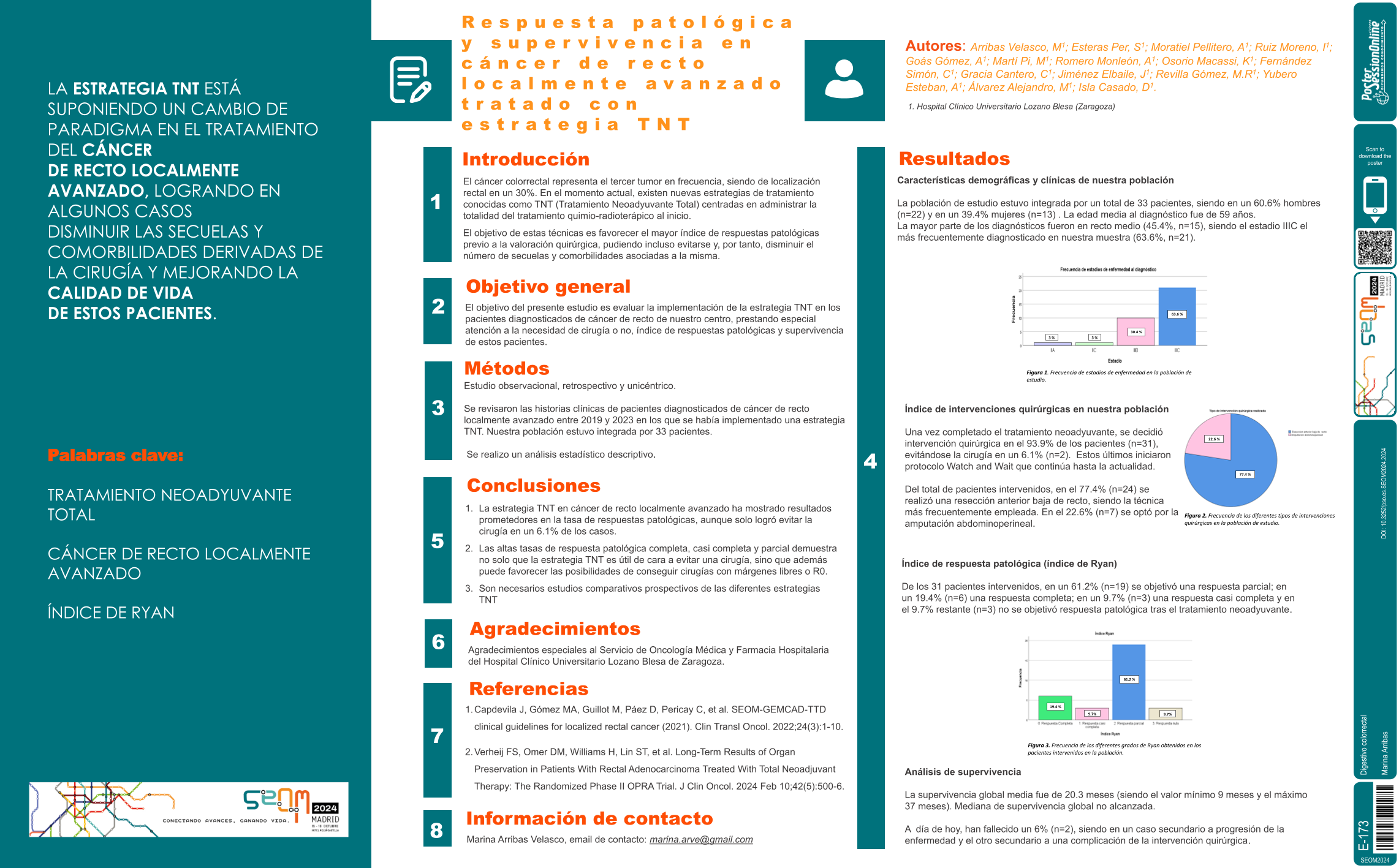
| Tendencias Pronósticas y Evaluación de T.. | Pablo Jara Martín.. | .. | Digestivo colorrectal.. | - - | |
| ÍNDICE APOPTÓTICO TUNEL COMO BIOMARCADOR.. | Marta Robles .. | M. García-Aranda, C. Abitei , .. | Digestivo colorrectal.. | - - | |
| ESTUDIO BICAR: PAPEL DEL MICROBIOTA INTE.. | Carme Garcia benito.. | .. | Digestivo colorrectal.. | - - | |
| Caracterización molecular e identificaci.. | María San Román Gil.. | .. | Digestivo colorrectal.. | - - | |
| Tratamiento con Trifluridina-Tipiracilo .. | Víctor Alía Navarro.. | Carlos González Merino, Ana Ma.. | Digestivo colorrectal.. | - - | |
| Cáncer colorrectal con mutación BRAF V60.. | Maria Pereira .. | Maria Beatriz Gonalves, Maria.. | Digestivo colorrectal.. | - - | |
| Empleo de PET-TC en la valoración de res.. | Sofía Wikstrm Fernández.. | Andrea Barrigón, Andrés Murill.. | Digestivo colorrectal.. | - - | |
| ANÁLISIS RETROSPECTIVO DE PACIENTES CON .. | Roberto Jiménez Rodríguez.. | .. | Digestivo colorrectal.. | - - | |
| Datos de vida real de la terapia guiada .. | Eduardo Terán Brage.. | Rosario Vidal Tocino1,2, Pablo.. | Digestivo colorrectal.. | - - | |
| Datos de vida real en el tratamiento ady.. | Coral García de Quevedo Suero.. | Carlos González Merino, Patric.. | Digestivo colorrectal.. | - - | |
| Accesibilidad a Ensayos Clínicos de Tumo.. | Juan José García-Mosquera .. | .. | Digestivo colorrectal.. | - - | |
| Eficacia y seguridad de trifluridina/tip.. | Nieves Martinez Lago.. | .. | Digestivo colorrectal.. | - - | |
| Estrategia TNT en cáncer de recto localm.. | Sara Esteras Per.. | Marina Arribas Velasco , Alba .. | Digestivo colorrectal.. | - - | |
| RESULTADOS DEL TRATAMIENTO NEOADYUVANTE .. | Lucía Gómez González.. | .. | Digestivo colorrectal.. | - - | |
| Estudio de los distintos factores de rie.. | Pilar Sotoca Rubio.. | Ana María Barrill Corpa, Pablo.. | Digestivo colorrectal.. | - - | |
| Terapia neoadyuvante total como tratamie.. | Pilar Sotoca Rubio.. | Pilar Sotoca Rubio, Jaime More.. | Digestivo colorrectal.. | - - | |
| Análisis retrospectivo de pacientes con .. | Margarita Díez de los Ríos Riobó.. | Elena Torner Marchesi, Cristin.. | Digestivo colorrectal.. | - - | |
| Abordaje integral del cáncer de recto: e.. | M. Alejandra Molina Pérez.. | .. | Digestivo colorrectal.. | - - | |
| Detección multimodal de biomarcadores ge.. | Sofia España Fernandez.. | .. | Digestivo colorrectal.. | - - | |
| Respuesta patológica y supervivencia en .. | Marina Arribas .. | .. | Digestivo colorrectal.. | - - | |
Abstract
Thunderstorm-related asthma in patients sensitised to olea europaea pollen: twenty emergency department visits for asthmatic symptoms in one single day Losappio, Laura1; Heffler, Enrico2; Falco, Antonio1; Contento, Francesco1; Cannito, Cosimo1; Rolla, Giovanni2 1"Dimiccoli" Hospital, Emergency Department, Barletta, Italy; 2University of Torino - AO Mauriziano "Umberto I", Allergy and Clinical Immunology, Torino, Italy
Background: Associations between thunderstorm and asthma morbidity have been reported in several countries. Common to all epidemics of thunderstorm-related asthma is a significant increase in atmospheric allergen load during and immediately after a thunderstorm. Sensitization to Alternaria species or to grass and parietaria pollens has been suggested to play a key role in thunderstorm-related asthma. The only reported event of thunderstorm-related asthma in Mediterranean area was attributed to sensitization to parietaria pollen.
Method: here we describe a series of 20 patients who presented to Emergency Department in Barletta (94,000 inhabitants), Puglia (Italy) for sudden and severe asthmatic symptoms between May 27th and 28th 2010 (from15:36 to 5:02), immediately after a violent thunderstorm which occurred following a very hot morning (mean temperature: 29°C). All the patients have been subsequently visited by an allergist and underwent allergological work-up which included skin prick tests and a careful clinical history. Local pollen counts were available.
Result: Between May 10th and June 10th 2010, 86 Emergency Department asthma visits were recorded, 20 of them during the study day. Patients' mean age was 44.25 +/- 18.5 years (range: 9-81), 8/20 females, 2 smokers, 16 with a previous history of known respiratory allergy. Only two patients regularly took anti-asthma drugs. All 20 patients were sensitized to Olea europaea pollen, 7 of whom were monosensitized. Ten patients were sensitized to grass, 7 to parietaria, 5 to compositae, 5 to cypress, 5 to house dust mites, 3 to dog and 1 to cat danders. No patient was sensitized to Alternaria. Mean pollen count was 17 granules/m3 for Olea europaea, 6 granules/m3 for grass pollen.
Conclusion: This is, in our knowledge, the second epidemic of thunderstorm related asthma described in Mediterranean area and the first one in which sensitization to Olea europaea played a key-role. In conclusion, our report indicates that thunderstorm asthma may involve different allergens (not only fungal spores and grass or parietaria pollen) in different geographic areas, depending on the seasonality of thunderstorms and allergenic pollen.